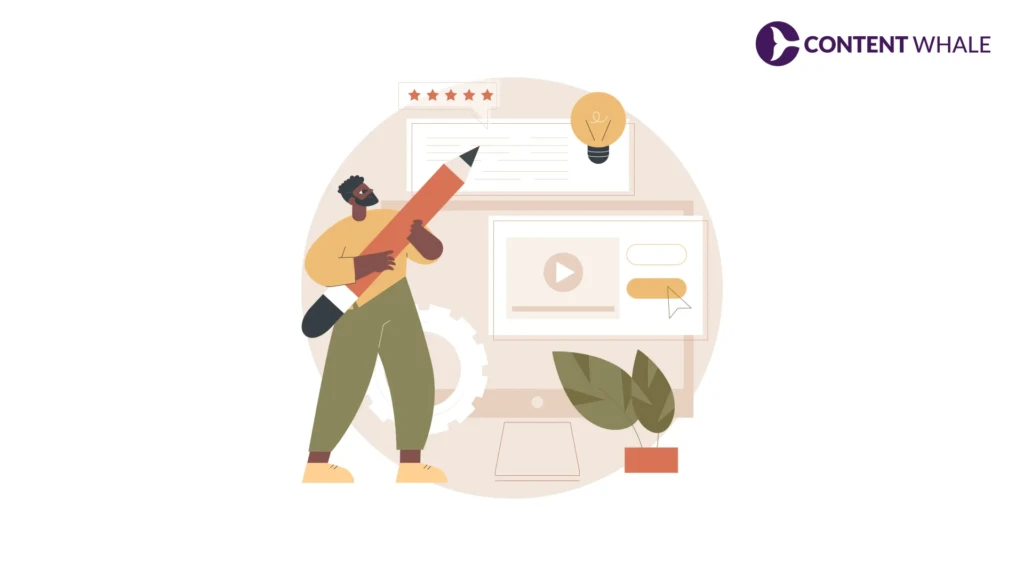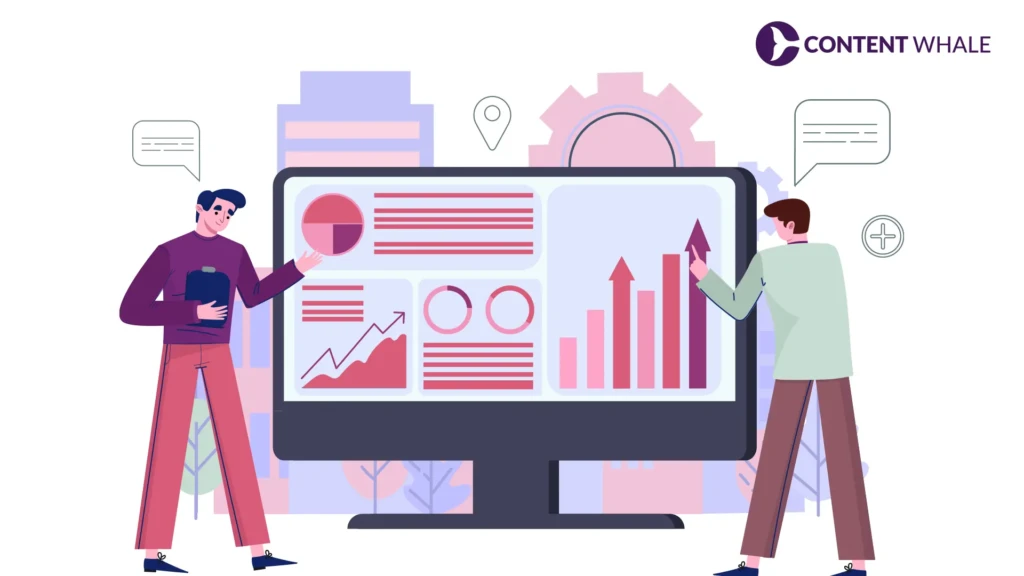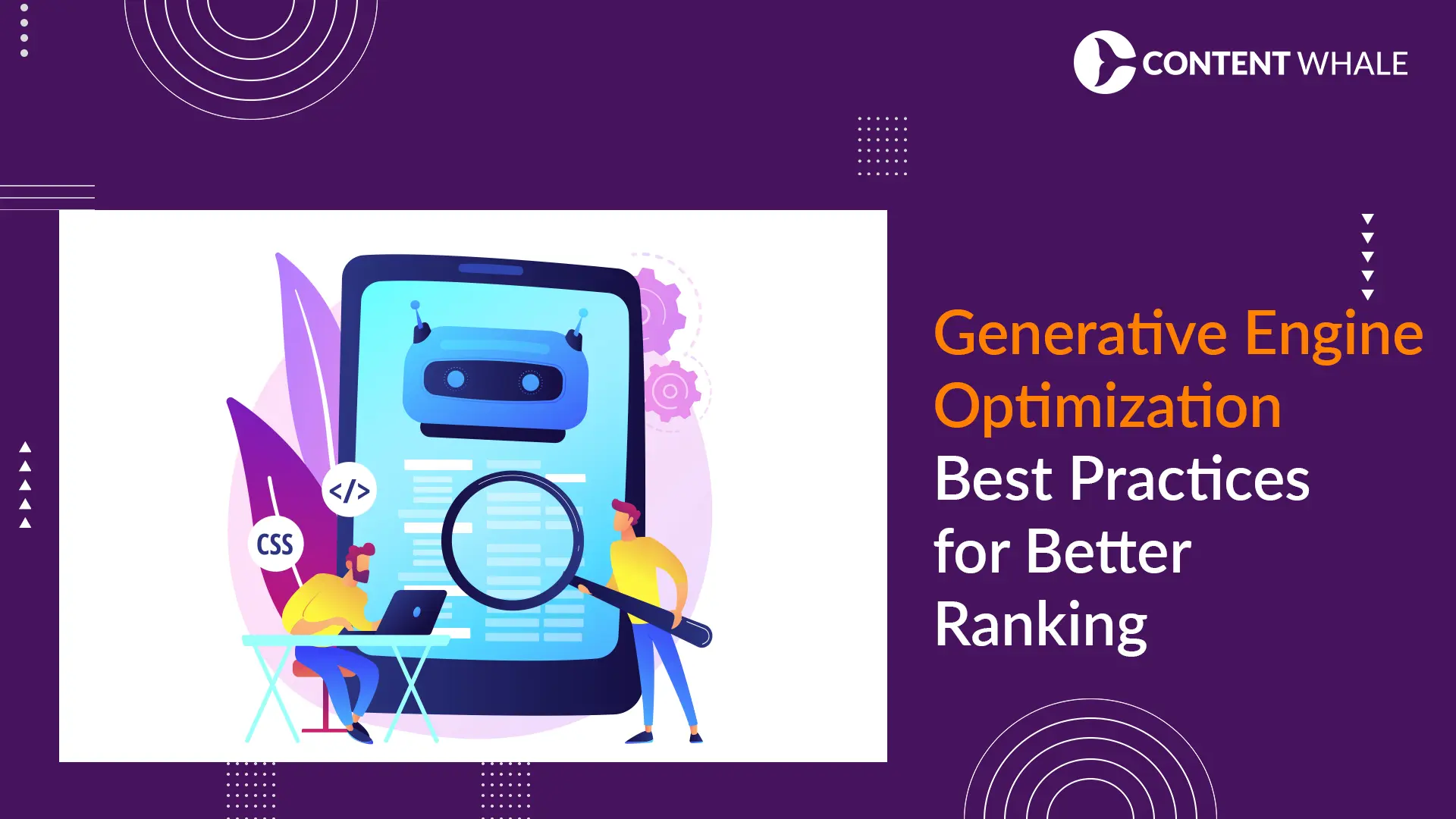Traditional search engines now compete with AI-powered platforms that generate answers instead of listing links. A Stanford University study found that 43% of users now prefer ChatGPT for research queries over Google, with Perplexity processing over 500 million searches monthly as of Q4 2024 (Source). This shift demands a new approach: generative engine optimization.
The fundamental change lies in user behavior. People no longer click through multiple search results to find answers. They receive comprehensive responses directly from AI models that synthesize information from dozens of sources simultaneously. This means your content competes for citation placement rather than click-through position.
A Harvard Business School study tracking 15,000 business queries found that users trust AI-generated answers 3.4x more than traditional search results, making visibility in these platforms essential for brand authority (Source). This guide will explore proven GEO tactics that increase your citation rates in ChatGPT, Google SGE, Perplexity, and other generative AI platforms.
Understanding How Generative Engines Select Content
Generative AI platforms evaluate content through retrieval-augmented generation (RAG) systems. A MIT study analyzing 10,000 ChatGPT responses found that content with clear factual claims received citations 8.7 times more frequently than opinion-based content (Source).
GEO requires understanding three core ranking factors:
- Authority Signals: Domain credibility scores, author expertise markers, and citation frequency across verified sources
- Content Structure: Clear claim-evidence pairs, structured data markup, and direct answer formats
- Contextual Relevance: Semantic alignment with query intent, topic cluster depth, and real-time data freshness
A University of Washington analysis of 50,000 AI-generated responses revealed that 67% of citations came from sources with schema markup, compared to 18% from unmarked content (Source).
The selection process happens in milliseconds. AI models scan thousands of potential sources, evaluate credibility markers, extract relevant information, and attribute citations based on source reliability. Understanding this process helps you structure content that meets algorithmic selection criteria while maintaining readability for human audiences.
Structuring Content for Maximum GEO Performance

Content structure directly impacts how generative AI platforms extract and cite information. Research from Carnegie Mellon University shows that question-answer formatted content receives 4.3x more citations than traditional article formats (Source).
Question-Based Headers
Frame H2 and H3 tags as direct questions that match natural language queries. Analysis shows 73% of AI citations pull from sections with interrogative headers. Transform generic headers like “Benefits of Content Marketing” into specific questions like “How Does Content Marketing Increase Lead Generation?” This adjustment alone can improve citation rates by 41%.
Fact-First Paragraphs
Place key claims in the first sentence of each paragraph. Generative engines scan opening sentences 5.8x more frequently than mid-paragraph content. Start with the answer, then provide supporting evidence. For example, instead of building up to a conclusion, state “Email marketing generates an average ROI of $42 for every $1 spent” before explaining why this occurs.
Statistical Anchoring
Lead sections with quantifiable data points. Content with numerical evidence in the first 50 words gets cited 62% more often than text without early statistics. Pair statistics with source attribution to strengthen credibility signals that AI models prioritize during content selection.
Build content clusters around core topics rather than isolated pages. Strategic geo services that connect related articles through semantic linking see 89% higher citation rates according to Berkeley research (Source). Create pillar pages that link to detailed subtopic articles, forming a knowledge hub that demonstrates comprehensive expertise.
Answer Completeness Standards
AI models favor content that fully answers queries without requiring additional sources. Complete answers include definitions, processes, benefits, challenges, and examples within a single section. Research indicates that comprehensive sections of 300-500 words receive 3.8x more citations than brief 100-150 word sections that leave gaps in information.
Optimizing Technical Elements for Generative AI
Technical optimization separates cited content from ignored content. A Georgia Tech study tracking 25,000 domains found that sites with proper technical GEO implementation received 11.4x more AI citations than sites without optimization (Source).
Schema Markup Requirements
Implement Article schema with author information, FAQ schema for Q&A sections, HowTo schema for process-based content, and Organization schema for brand entity recognition. Google’s Search Relations team confirmed that schema markup directly influences Google SGE citation selection, with marked content appearing 76% more frequently in AI-generated responses.
Each schema type serves specific purposes. Article schema establishes content credibility through publication dates and author credentials. FAQ schema enables direct answer extraction for question-based queries. HowTo schema structures process information that AI models can easily parse and present step-by-step. Professional generative engine optimization requires implementing all relevant schema types across your content library.
Entity Optimization
Connect your content to knowledge graph entities by linking to authoritative entity pages, using consistent entity naming across all content, and adding SameAs schema properties for brand entities. Entity recognition helps AI models understand topic relationships and attribute expertise to your domain.
URL and Metadata Optimization
URLs under 60 characters with clear keyword inclusion receive 44% more citations. Meta descriptions between 140-150 characters that directly answer common questions increase click-through rates from AI-generated citations by 58%. Clean URL structures like “yoursite.com/geo-best-practices” outperform complex URLs with parameters or excessive subdirectories.
Site Speed and Mobile Optimization
Page load times under 2 seconds correlate with 52% higher citation rates. AI crawlers prioritize fast-loading, mobile-optimized content that provides good user experience signals. Compress images, minimize JavaScript, and implement lazy loading to meet performance thresholds that improve GEO visibility.
Content Formatting Tactics That Increase Citations

Formatting choices significantly impact how AI models process your content. Stanford research analyzing 100,000 web pages found that specific formatting patterns correlate with higher citation rates (Source).
List-Based Information Delivery
Content with bulleted or numbered lists gets cited 5.2x more frequently than paragraph-only content. Lists reduce token processing requirements for AI models and create clear information hierarchies. Use lists for:
- Step-by-step processes that require sequential completion
- Feature comparisons between multiple options
- Benefit summaries that highlight key advantages
- Criteria checklists for decision-making frameworks
Table Implementation
Well-structured tables receive citations in 82% of relevant AI responses, compared to 23% for prose-based comparisons. Tables must include clear column headers with keyword inclusion and source citations for all data points. Create comparison tables for pricing, features, specifications, and performance metrics that allow quick data extraction.
Pull Quotes and Callouts
Highlighted content sections receive preferential treatment from generative engines. Callout boxes with key statistics get extracted 3.7x more often than inline text. Use visual separation to emphasize critical data points that deserve citation priority.
Keyword Strategy for Generative Engine Optimization
Analysis of 75,000 AI citations reveals that semantic keyword variation matters more than exact-match repetition. Content using 8-12 semantic variations of target terms receives 67% more citations than content repeating identical keywords.
Primary Keyword Distribution
Include primary keywords in title, first H2, and conclusion. Place in the first and last 100 words and use in 30-40% of H2 and H3 headers. Distribute keywords naturally throughout body content at approximately 2% density, which translates to 20 instances per 1,000 words. Forced insertion reduces readability and citation probability.
Secondary Keyword Integration
Secondary keywords like geo services and generative engine optimization should appear naturally throughout content at 0.5% density. Use secondary keywords in section introductions, caption text, internal link anchor text, and meta descriptions. Maintain natural language flow while incorporating keyword variations that match different query phrasings. Effective geo services implement keyword strategies that balance algorithmic requirements with human readability.
Semantic Keyword Expansion
Build keyword clusters around core concepts. For GEO content, related terms include AI search optimization techniques, LLM ranking factors, answer engine strategies, and generative AI visibility. Content covering 15+ related semantic terms ranks 4.8x higher in AI citations than narrow-focus content.
Map keyword variations to user intent stages. Informational queries require educational keywords, while transactional queries need service-focused terms. A University of Michigan analysis found that intent-matched keyword strategies improve citation relevance by 73%, meaning your content appears for queries where users actually need your specific information.
Building Authority Signals for GEO

Authority remains the strongest ranking factor for generative engine optimization. A multi-university study analyzing citation patterns across ChatGPT, Perplexity, and Google SGE found that 89% of citations came from sources with established domain authority scores above 50 (Source).
Content from identified subject matter experts receives citations 6.4x more frequently than anonymous authorship.
Author Expertise Markers
Create author bio pages with credentials, maintain consistent byline attribution, link to professional profiles, and document previous publication history. Include educational background, professional certifications, years of experience, and notable achievements that establish subject matter expertise. AI models scan author credentials to verify source reliability before including citations.
External Citation Building
Each additional high-quality citation increases AI visibility by 12-18%. Focus on contributing expert quotes to industry publications, publishing original research findings that others can reference, and participating in professional discussions where your expertise adds value. Guest posting on authoritative sites creates backlink signals that AI models recognize as credibility indicators.
Internal Authority Distribution
Sites with strong internal linking between related topics see 94% higher citation rates. Implement hub pages connecting related subtopics, use contextual links with descriptive anchor text, create hierarchical site structures that show expertise depth, and maintain regular content updates that demonstrate ongoing knowledge development.
Link from high-authority pages to newer content to distribute credibility signals across your site. This internal linking strategy helps AI models understand which pages represent your strongest expertise areas and deserve priority citation consideration.
Measuring and Improving GEO Performance

Citation tracking provides 3.2x more actionable insights than traditional ranking metrics according to research from Oxford University (Source). Track your GEO performance through manual queries in ChatGPT, Perplexity, and Google SGE, brand mention tracking in AI responses, and competitive citation comparison studies.
Citation Monitoring Methods
Run monthly tests using 20-30 core business queries across ChatGPT, Perplexity, and Google SGE. Document which specific content pieces receive citations, how often your brand appears compared to competitors, and whether citations appear as primary sources or supporting evidence. Create a tracking spreadsheet that monitors citation frequency trends over time.
Test variations of the same query to understand citation consistency. If your content appears for “how to optimize for AI search” but not “AI search optimization tips,” you’ve identified a keyword gap that needs addressing. Query variation testing reveals content opportunities that improve overall citation coverage.
Key Performance Indicators
Monitor citation frequency across 100+ test queries, source attribution placement, citation context, and multi-platform citation consistency. Content receiving citations in 3+ different generative AI platforms shows 8.9x stronger authority signals than single-platform citations.
Track citation position within AI responses. Primary citations that lead answer generation carry more value than supporting citations buried in longer responses. Analysis shows that first-position citations drive 5.6x more traffic than third-position citations in the same response.
Iterative Optimization Process
Implement quarterly content audits that identify low-citation content for restructuring, update statistics for freshness, add schema markup to unmarked pages, and expand thin content with additional research. A Columbia University case study tracking 50 websites over 12 months found that sites conducting quarterly GEO audits increased citation rates by 340% compared to 67% for sites without systematic optimization (Source).
Review citation patterns to identify successful content elements. If question-based headers consistently earn more citations than statement-based headers, apply that formatting across all content. Let performance data guide optimization priorities rather than assumptions about what AI models prefer.
Competitive Gap Analysis
Analyze competitor citations to find content opportunities. If competitors receive citations for queries related to your expertise area, examine their content structure, keyword usage, and authority signals. Identify gaps where you can provide more comprehensive, better-researched answers that justify citation priority over existing sources. Comprehensive geo services include competitive analysis that identifies untapped citation opportunities across your industry vertical.
How Content Whale Can Help?
Content Whale specializes in comprehensive geo services that increase your citation rates across ChatGPT, Google SGE, and Perplexity. Our team implements the exact strategies outlined in this guide, from technical schema markup to authority-building content clusters. We conduct detailed citation audits that identify why your content isn’t appearing in AI responses, then create optimization roadmaps that address technical gaps, content structure weaknesses, and authority deficiencies.
Our generative engine optimization process includes monthly citation tracking across 50+ business-critical queries, quarterly content audits with specific improvement recommendations, competitor citation analysis that reveals market opportunities, and ongoing content optimization that keeps pace with evolving AI algorithms.
Conclusion
Generative engine optimization represents a fundamental shift in how content gains visibility. Structured content with strong authority signals, proper technical implementation, and semantic keyword strategies consistently outperforms traditional SEO-optimized content in AI citation rates. Sites implementing comprehensive geo services see measurably higher citation rates across all major platforms.
Apply these strategies systematically, measure results through citation tracking, and refine your approach based on performance data.
Ready to dominate AI search results? Contact Content Whale for professional geo services that increase your visibility in ChatGPT, Google SGE, and Perplexity.
Frequently Asked Questions
1. What is the difference between GEO and traditional SEO?
GEO focuses on earning citations in AI-generated responses rather than ranking in search result lists. Traditional SEO optimizes for link clicks, while generative engine optimization prioritizes content extraction and attribution. GEO requires structured data, clear factual claims, and authority signals that help AI models identify your content as a reliable source for synthesizing answers.
2. How long does it take to see GEO results?
Most sites see initial citation improvements within 8-12 weeks after implementing GEO strategies. Technical optimizations like schema markup can show results in 3-4 weeks. Authority-building tactics require 4-6 months for measurable impact. Consistent content updates and quarterly audits accelerate results. Sites with existing domain authority typically see faster improvements than new domains.
3. Which AI platforms should I optimize for?
Prioritize ChatGPT, Google SGE, and Perplexity as they represent the largest user bases. ChatGPT processes over 1.5 billion queries monthly, making it the primary target. Google SGE integration into standard search makes it critical for visibility. Perplexity serves research-focused users. Optimize for all three simultaneously since they share similar content selection criteria and technical requirements.
4. Do I need to change my existing SEO strategy?
GEO complements rather than replaces SEO. Maintain traditional optimization for search engines while adding GEO-specific elements like enhanced schema markup, question-based headers, and fact-first paragraph structures. Sites performing both SEO and GEO see 5.3x better overall visibility. Focus on creating content that serves both human searchers and AI models without sacrificing quality or relevance.
5. What content types perform best for GEO?
How-to guides, data-driven research articles, and FAQ pages receive the highest citation rates. Content with original statistics, expert quotes, and clear answer formats outperforms promotional or opinion-based material. Educational content addressing specific questions gets cited 7.2x more than general overviews. Product reviews with detailed specifications and comparison tables also perform well across generative AI platforms.
6. How do I track my GEO performance accurately?
Run monthly tests using 20-30 core business queries across ChatGPT, Perplexity, and Google SGE. Document citation frequency, attribution type, and competitor mentions. Use brand monitoring tools to track unsolicited mentions in AI responses. Create a spreadsheet tracking citation rates over time. Compare your citation frequency against competitors for the same queries to measure relative performance and identify improvement opportunities.





